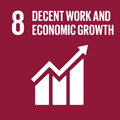- Docente: Marco Alvise Bragadin
- Credits: 6
- SSD: ICAR/11
- Language: English
- Teaching Mode: In-person learning (entirely or partially)
- Campus: Ravenna
- Corso: First cycle degree programme (L) in Building Construction Engineering (cod. 5897)
-
from Feb 18, 2025 to Jun 04, 2025
Learning outcomes
Through this course, the student learns the basic elements of architectural technology and the principles of construction project management. Furthermore, the course introduces the student to the study of buildings from the technical, functional, morphological and construction process point of view. At the end of the course, students will be able to know the main construction principles of the buildings, split up the building system into technological units and technical elements, knowing the materials and the functions related to each of them, and understanding the basic methods and instruments of construction project management: time and cost planning, project control, job site optimisation and occupational health and safety.
Course contents
Requirements/Prior knowledge
A prior knowledge and understanding of building systems is required to understand properly the contents of this course. In addition, students should master the computer – based drawing software – CAD.
Fluent spoken and written English is needed as a pre-requisite: all lectures and tutorials, and all study material will be in English.
Course Content
1. Construction management – project management methods for planning, scheduling, and controlling construction projects.
1.1. Project Management for Building and Construction projects:
- Project Management Body of Knowledge (PMBOK)
- ISO 21500 Guidance on Project Management
1.2 Project Scope & Cost Management:
- Work Breakdown Structure (WBS)
- Bill-Of-Quantities (BOQ)
- Price Analysis & Schedule of Rates
- Activity duration estimate
- Diagram-based methods (Gantt, S curve, resource histograms, flowline/Line-Of-Balance LOB)
- Activity networks - Critical Path Method (CPM)
- Activity networks - Precedence Diagramming Method (PDM) Simple & Generalized logic links.
2. Construction job-site planning and safety provisions
2.1. Designing of construction job-site layout:
- Job layout stationing and logistic systems
- Safety – oriented construction job-site planning
- Site analysis
2.2 Good practices and safety standards for construction operations
- Lifting equipment - Tower Cranes
- Safety for work at heights
- Service and support scaffoldings
3. Occupational Health and Safety law in construction:
- Occupational Health and Safety Laws and regulations
- The European Directives on OH& S and the Italian consolidated safety act
- Safety management in EU and Italy
Project work / homework (individually or group of students):
-
The project work will address planning and management of the construction stage:
- Building site design and organization
- WBS & BOQ
- Construction schedule (software MS project)
Readings/Bibliography
Required readings:
- Class notes “virtuale.unibo.it”: https://virtuale.unibo.it/
Recommended readings:
- Bragadin Marco A., La programmazione dei lavori con i metodi reticolari, Maggioli 2011.
- Hinze J.W., Construction Planning and Scheduling. Pearson prentice hall, third ed. 2008.
- PMI, Project Management Body of Knowledge (PMBOK Guide), USA standard ANSI 99-001-2004
- ISO 21500 Guidance on Project Management
- Hendrickson C., Project Management for Construction, Carnegie Mellon University, USA.
- Mubarak S., Construction Project Scheduling and Control, Wiley
- Pierce D.R., Project Scheduling and Management for Construction, RSMeans Wiley
- Trani M.L., Construction Site Design. Maggioli 2012.
- Barrie D. S., Paulson B. C., Professional Construction Management. McGraw Hill International Editions, 1992.
- Peurifoy R.L., Ledbetter W.B., Schexnayder C. J., Construction Planning, equipment, and methods. McGraw Hill International Editions, 1992.
- Frein J. P. (Ed.) Handbook of Construction Management and Organization. Van Nostrand Reinhold.
Teaching methods
The course is a component of the “ARCHITECTURAL TECHNOLOGY I.C.” learning activity. Archiectural Technology is divided into two courses: FUNDAMENTALS OF ARCHITECTURAL TECHNOLOGY and BUILDING SITES AND PRODUCTION.
Both courses include lectures and practical exercises.
Teaching methods: in - class lessons, practical classes, mandatory homework assignments, i.e. project- work.
In-class lectures are aimed at learning the methods and tools needed for the project work implementation. Practical class and project work will be performed during the course development. Attendance in practical classes and for project work implementation is recommended.
At the end of the lecture term the project work will be completed by students at home, and then presented for the exam.
Assessment methods
EN
Final exam: in - class exercises and homework (mandatory). Homework will be evaluated and discussed in the final oral exam.
Achievements will be assessed by the means of a final exam. This is based on an analytical assessment of the "expected learning outcomes" described above.
In order to properly assess such achievement the examination is composed of different sessions: written session, which consist of a test, duration 2 hours; to be eligible to take the final exam the student must score in the written test a minimum total of 18 points with a maximum of 30.
The oral session consists of the following: a review of the homework and a review of the written output, in which examiners inform the student on grading criteria, and receive any student appeal supported by appropriate explanations; and a technical conversation. Homework/project work must be completed and passed prior the oral exam.
Higher grades will be awarded to students who demonstrate an organic understanding of the subject, a high ability for critical application, and a clear and concise presentation of the contents.
To obtain a passing grade, students are required to at least demonstrate a knowledge of the key concepts of the subject, some ability for critical application, and a comprehensible use of technical language.
A failing grade will be awarded if the student shows knowledge gaps in key-concepts of the subject, inappropriate use of language, and/or logic failures in the analysis of the subject.
Teaching tools
Personal Computer, Projector, homework and building site visits.
Office hours
See the website of Marco Alvise Bragadin
SDGs



This teaching activity contributes to the achievement of the Sustainable Development Goals of the UN 2030 Agenda.
